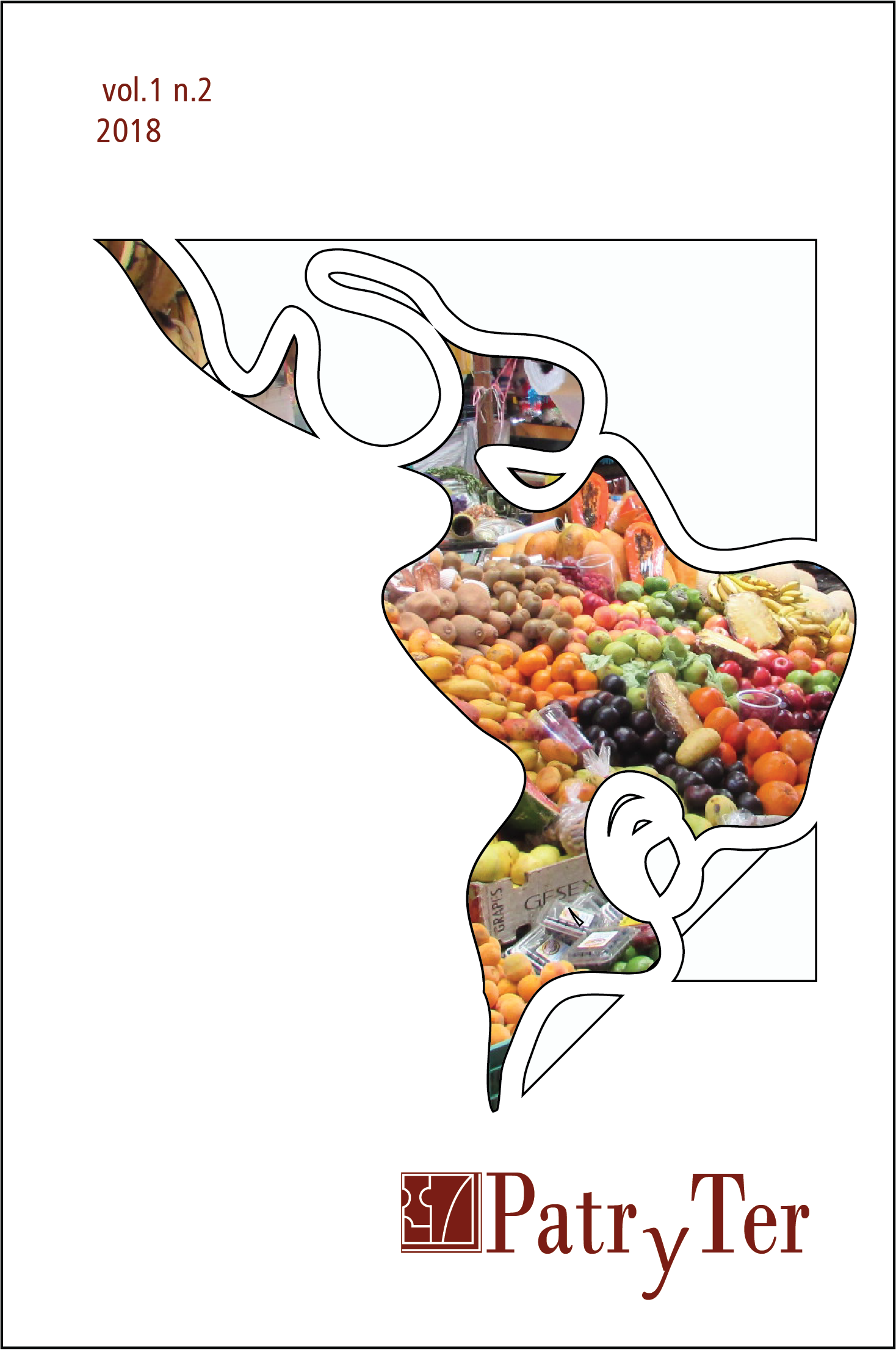Urban heritage and landscape in Argentina: the case of the Candioti Sur neighborhood in Santa Fe (2001-2013)
DOI:
https://doi.org/10.26512/patryter.v1i2.6631Keywords:
Urban transformations. heritage; landscape. regulatory instruments. Candioti Sur.Abstract
The impulse of the constructive activity, starting from the economic recovery after the crisis of 2001 in Argentina, modified values in the heritage and landscape of certain urban environments. The present article approaches the case of Candioti Sur neighborhood of the city of Santa Fe - Argentina from 2001 to 2013, where an accelerated process of urban transformation puts at risk the environmental (patrimonial and landscape) values of the place. This is reflected on a conflict because the coexistence of two urban processes: consolidation process and transformation process. The problem is studied from an urban analysis of the neighborhood that involves the particular study of the urban tissue, the urban landscape and the normative instruments involved.
Downloads
References
Choay, F. (Noviembre - Diciembre de 1993). Alegoría del patrimonio, monumento y monumento histórico. Arquitectura Viva(33).
Collado, A. (1994). Documento de trabajo N°2: Proyectos urbanísticos para la ciudad 1887‐1927. Santa Fe: FADU-UNL.
Collado, A. (1999). Atlas Histórico. Interpretaciones gráficas sobre los procesos urbanos en Santa Fe. Polis.
Cullen, G. (1974). El paisaje urbano. España: Blume y Labor.
Fernández, R. (1991). Patrimonio: ¿Qué investigación, para qué preservación del patrimonio? Revista de Arquitectura Sur, 2(5).
García Canclini, N. (1999). Los usos sociales del patrimonio cultural. En E. Aguilar Criado, Patrimonio etnológico : nuevas perspectivas de estudio (págs. 16-33). Andalucía.
Harvey, D. (2013). Ciudades rebeldes. Del derecho de la ciudad a la revolución urbana. (J. Madariaga, Trad.) Madrid: Akal.
Lapelle, H., López Asensio, G., & Woelflin, M. L. (Noviembre de 2011). Decimosextas Jornadas "Investigaciones en la Facultad" de Ciencias Económicas y Estadística. El sector construcción-inmobiliario a una década de la crisis 2001. Rosario: Instituto de Investigaciones Económicas - UNR.
Lefebvre, H. (2013). La producción del espacio ((1ra en Español) ed.). Madrid: Capitán Swing.
Lynch, K. (2010). La imagen de la ciudad (1 ed.). Barcelona, España: Gustavo Gili, SL.
Massey, D. (2005). La filosofía y la política de la espacialidad: algunas consideraciones. En L. (. Arfuch, Pensar este tiempo. Espacios, afectos, pertenencias. (pág. 332). Buenos Aires : Paidós.
Naselli, C. (1992). De Ciudades, Formas y Paisajes. Asunción, Paraguay : Arquna.
Nogué, J. (Ed.). (2007). La construcción social del paisaje. Madrid, España: Biblioteca Nueva S.L.
Nogué, J. (2008). Introducción: La valoración cultural del paisaje en la contemporaneidad. En J. Nogué (Ed.), El paisaje en la cultura contemporánea (págs. 9-24). Madrid, España: Biblioteca Nueva S.L.
Nogué, J. (2010). El retorno al paisaje. Enrahonar, 123-136.
Salvia, S. (2015). Políticas económicas, mercado mundial y acumulación de capital en la Argentina post-convertibilidad. Revista de Economía Crítica, 178-196.
Sánchez de Madariaga, I. (1999). Introducción al Urbanismo. Conceptos y métodos de la planificación urbana. Madrid: Alianza.
Sánchez de Madariaga, I. (2008). Esquinas inteligentes: La ciudad y el urbanismo moderno. Madrid: Alianza.
Valiente, D. A., & Nardelli, M. (2014). Ficha de Cátedra: Imagen Urbana – Paisaje Urbano. Santa Fe, Argentina: Cátedra de Urbanismo 2, FADU-UNL.
Vittori, G. J. (1997). Santa Fe en clave. Santa fe: BICA CEM Ltda.
Waisman, M. (1996). El patrimonio es la construcción de la ciudad. Summa +(23).
Waisman, M. (1997). El patrimonio en el tiempo. Astrágalo.
Downloads
Published
How to Cite
Issue
Section
License
Copyright (c) 2018 PatryTer

This work is licensed under a Creative Commons Attribution 4.0 International License.
Please be advised that Revista Patryter is licensed under a Creative Commons Attribution-NonCommercial-NoDerivatives 4.0 International License (CC BY 4.0) https://creativecommons.org/licenses/by/4.0/
Authors who publish in the PatryTer Magazine agree to the following terms:
- Authors retain the copyright and grant the journal the right of first publication, the work being simultaneously licensed under the Creative Commons Attribution License (CC BY) which allows the sharing of the work with recognition of the authorship of the work and initial publication in this journal.
- The contribution is original and unpublished and is not being evaluated for publication by another journal. When submitting the article, authors should attach as a supplementary document a Letter addressed to the PatryTer's Editor, indicating the academic merits of the submitted work (relevance, originality and origin of the article, that is, from what type of research]. This letter must be signed by all authors.
- Authors assign the copyright of the work that they present to the Editorial Board of PatryTer Magazine, which may serve the article in the PatryTer Magazine and in public and private databases in Brazil and abroad.
- Authors declare that they are fully responsible for the entire contents of the contribution that they submit to the Editorial Board of PatryTer Magazine.
- Authors declare that there is no conflict of interest that could interfere in the impartiality of the scientific papers submitted to the PatryTer Magazine Editorial Board.
- Authors are authorized to take additional contracts separately, for non-exclusive distribution of the version of the work published in this journal (eg publish in institutional repository or as a book chapter), with acknowledgment of authorship and initial publication in this journal.
Authors are allowed and encouraged to publish and distribute their work online (eg in institutional repositories or on their personal page) at any point before or during the editorial process, as this can generate productive changes as well as increase the impact and the citation of the published work (See The Effect of Free Access).




